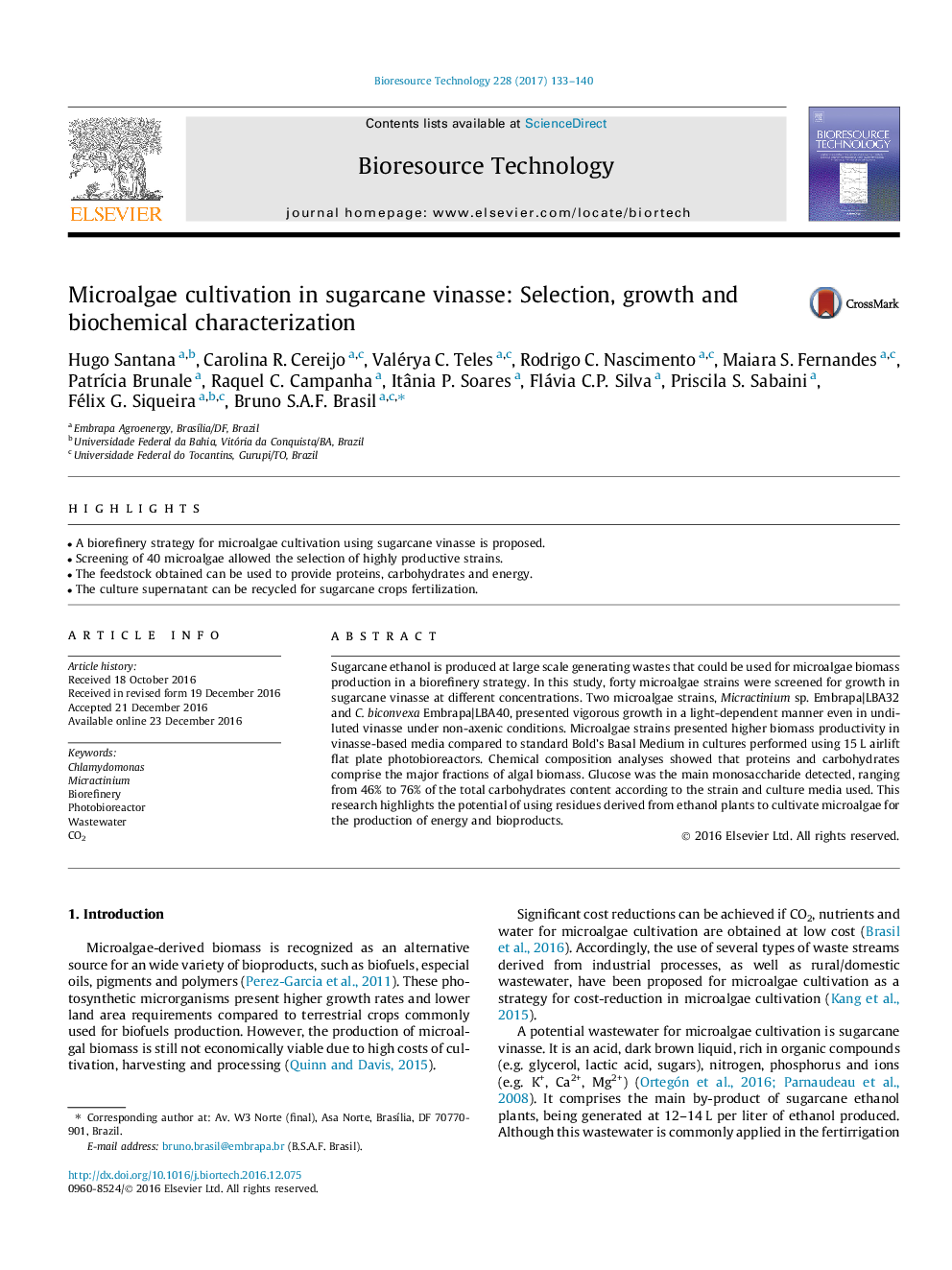| Article ID | Journal | Published Year | Pages | File Type |
|---|---|---|---|---|
| 4997741 | Bioresource Technology | 2017 | 8 Pages |
â¢A biorefinery strategy for microalgae cultivation using sugarcane vinasse is proposed.â¢Screening of 40 microalgae allowed the selection of highly productive strains.â¢The feedstock obtained can be used to provide proteins, carbohydrates and energy.â¢The culture supernatant can be recycled for sugarcane crops fertilization.
Sugarcane ethanol is produced at large scale generating wastes that could be used for microalgae biomass production in a biorefinery strategy. In this study, forty microalgae strains were screened for growth in sugarcane vinasse at different concentrations. Two microalgae strains, Micractinium sp. Embrapa|LBA32 and C. biconvexa Embrapa|LBA40, presented vigorous growth in a light-dependent manner even in undiluted vinasse under non-axenic conditions. Microalgae strains presented higher biomass productivity in vinasse-based media compared to standard Bold's Basal Medium in cultures performed using 15Â L airlift flat plate photobioreactors. Chemical composition analyses showed that proteins and carbohydrates comprise the major fractions of algal biomass. Glucose was the main monosaccharide detected, ranging from 46% to 76% of the total carbohydrates content according to the strain and culture media used. This research highlights the potential of using residues derived from ethanol plants to cultivate microalgae for the production of energy and bioproducts.
